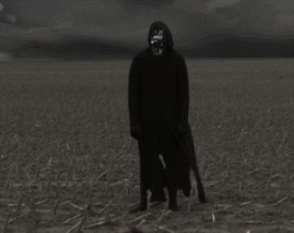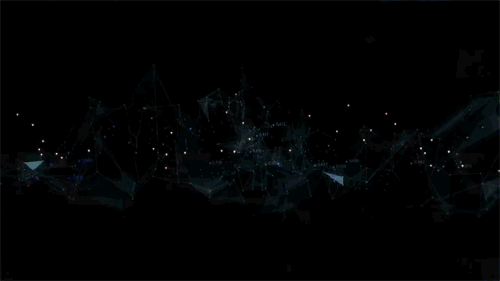Post by Lawyer Train on Mar 7, 2016 16:48:15 GMT -5
#TeachKrew is here to impart some knowledge upon your craniums.
Aren't ya'll some #luccbois?
Today we're going to learn about the Imperial Tombs of the Ming and Qing Dynasties, starting with the Eastern Qing Tombs:
"At the center of the Eastern Qing tombs lies Xiaoling, the tomb of the Shunzhi Emperor (1638–1661), who became the first Qing emperor to rule over China. Shunzhi was also the first emperor to be buried in the area. Buried with him are his empresses Xiaokangzhang (mother of the Kangxi Emperor) and Consort Donggo. The major tombs to the east of Shunzhi's mausoleum are Jingling (Kangxi Emperor) and Huiling (Tongzhi Emperor). To the west lie Yuling (Qianlong Emperor), Ding Dongling (Dowager Empress Cixi and Empress Ci'an), and Dingling (Xianfeng Emperor).
All imperial mausolea at the Eastern Qing tombs follow a pattern established by the Xiaoling mausoleum of the Shunzhi Emperor.[1] The basic layout consists of three sections: spirit way, palaces, and offering kitchens.[1] Xiaoling has the most elaborate spirit way and contains the following structures (from south to north): a stone archway, eastern and western dismounting stelae, grand palace gate, hall for changing clothes, divine merit stelae pavilion, stone sculptures, dragon-and-phoenix gate, one-arch bridge, seven-arch bridge, five-arch bridge, eastern and western dismounting stelae, three-way three-arch bridges and flat bridge.[1] The palace section of Xiaoling contains the following structures (from south to north): spirit way stela pavilion, eastern and western halls for court officials, Long'en Gate, eastern and western sacrificial burners, eastern and western side halls, Long'en Hall (Chinese: 隆恩殿; pinyin: Lóngēn Diàn; literally: "Hall of Enormous Grace"), gate of the burial chamber, two-pillar gate, stone altar-pieces, square city, memorial tower, glazed screen, crescent city, precious citadel, earth mound with the underground palace underneath.[1] The north of the palace was closed off with walls.[1] The section of the offering kitchens was positioned to the left of the palace section, it consists of a walled compound that contains the offering kitchens proper (i.e., where the sacrificial food was cooked), the southern and northern offering warehouses, and a slaughterhouse where the oxen and sheep were butchered.[1]
Jingling is the tomb of the Kangxi Emperor, and is surprisingly modest given that he was possibly the greatest emperor of the Qing dynasty but is in keeping with what is known of his character. The spirit way leading to the tomb has an elegant five-arch bridge; the guardian figures are placed on an unusual curve quite close to the tomb itself, and are more decorated than those at earlier tombs.
Yuling, the tomb of the Qianlong Emperor (the fourth emperor of the Qing dynasty), is one of the most splendid one of all royal tombs in Chinese history. Yuling has the finest tomb chamber, a series of nine vaults separated by four solid marble doors located at a depth of 54 metres (177 ft). Beginning with the first marble gate, all walls, vaulted ceilings, and gates are covered with Buddhist imagery such as the four heavenly kings, the eight bodhisattvas, the 24 buddhas, lions, the Eight Treasures, as well as ritual instruments and more than 30,000 words of Tibetan scripture and Sanskrit.[1] The 3-ton doors themselves have reliefs of bodhisattvas (beings on the road to enlightenment) and the four protective kings usually found at temple entrances. The Qianlong Emperor (died 1799) selected the site of his mausoleum in 1742 and construction began in the following year.[1] Construction was completed in 1752, but the mausoleum was expanded further in the years between 1755 and 1762.[1] During this time, the square city, memorial tower, the precious citadel, as well as the two side halls were newly built.[1]
Ding Dongling, the tomb of Empress Dowager Cixi stands out for its extremely luxurious decoration.[1] The Long'en Hall along with its eastern and western side halls is made from valuable red wood timbers. All three halls are decorated with gold-glazed coloured painting, gilded dragons, and carved stone rails. Today, the main hall contains reproductions of pictures produced in 1903 by Cixi's photo studio within the Summer Palace. Everywhere there are reminders of the Forbidden City, such as the terrace-corner spouts carved as water-loving dragons. The interior has motifs strikingly painted in gold on dark wood, recalling the buildings where she spent her last years. There are walls of carved and gilded brick, and superbly fearsome wooden dragons writhe down the columns.
Zhaoxiling, the tomb of the Empress Dowager Xiaozhuang, the mother of the Shunzhi Emperor is located to the east of the entrance to the spirit way that leads to the tomb of Shunzhi. Xiaozhuang is believed to have played an important role in consolidating early Qing dynasty authority. The mausoleum was started as a temporary resting hall under the direction of the Kangxi Emperor, who was the grandson of Xiaozhuang and followed her wishes in making this arrangement. The temporary hall was converted into the Zhaoxiling mausoleum in 1725, during the reign of the Yongzheng Emperor.
The tombs were looted by troops under the command of the warlord Sun Dianying in 1928."
Damn, get knowledge'd #luccbois.

Aren't ya'll some #luccbois?
Today we're going to learn about the Imperial Tombs of the Ming and Qing Dynasties, starting with the Eastern Qing Tombs:
"At the center of the Eastern Qing tombs lies Xiaoling, the tomb of the Shunzhi Emperor (1638–1661), who became the first Qing emperor to rule over China. Shunzhi was also the first emperor to be buried in the area. Buried with him are his empresses Xiaokangzhang (mother of the Kangxi Emperor) and Consort Donggo. The major tombs to the east of Shunzhi's mausoleum are Jingling (Kangxi Emperor) and Huiling (Tongzhi Emperor). To the west lie Yuling (Qianlong Emperor), Ding Dongling (Dowager Empress Cixi and Empress Ci'an), and Dingling (Xianfeng Emperor).
All imperial mausolea at the Eastern Qing tombs follow a pattern established by the Xiaoling mausoleum of the Shunzhi Emperor.[1] The basic layout consists of three sections: spirit way, palaces, and offering kitchens.[1] Xiaoling has the most elaborate spirit way and contains the following structures (from south to north): a stone archway, eastern and western dismounting stelae, grand palace gate, hall for changing clothes, divine merit stelae pavilion, stone sculptures, dragon-and-phoenix gate, one-arch bridge, seven-arch bridge, five-arch bridge, eastern and western dismounting stelae, three-way three-arch bridges and flat bridge.[1] The palace section of Xiaoling contains the following structures (from south to north): spirit way stela pavilion, eastern and western halls for court officials, Long'en Gate, eastern and western sacrificial burners, eastern and western side halls, Long'en Hall (Chinese: 隆恩殿; pinyin: Lóngēn Diàn; literally: "Hall of Enormous Grace"), gate of the burial chamber, two-pillar gate, stone altar-pieces, square city, memorial tower, glazed screen, crescent city, precious citadel, earth mound with the underground palace underneath.[1] The north of the palace was closed off with walls.[1] The section of the offering kitchens was positioned to the left of the palace section, it consists of a walled compound that contains the offering kitchens proper (i.e., where the sacrificial food was cooked), the southern and northern offering warehouses, and a slaughterhouse where the oxen and sheep were butchered.[1]
Jingling is the tomb of the Kangxi Emperor, and is surprisingly modest given that he was possibly the greatest emperor of the Qing dynasty but is in keeping with what is known of his character. The spirit way leading to the tomb has an elegant five-arch bridge; the guardian figures are placed on an unusual curve quite close to the tomb itself, and are more decorated than those at earlier tombs.
Yuling, the tomb of the Qianlong Emperor (the fourth emperor of the Qing dynasty), is one of the most splendid one of all royal tombs in Chinese history. Yuling has the finest tomb chamber, a series of nine vaults separated by four solid marble doors located at a depth of 54 metres (177 ft). Beginning with the first marble gate, all walls, vaulted ceilings, and gates are covered with Buddhist imagery such as the four heavenly kings, the eight bodhisattvas, the 24 buddhas, lions, the Eight Treasures, as well as ritual instruments and more than 30,000 words of Tibetan scripture and Sanskrit.[1] The 3-ton doors themselves have reliefs of bodhisattvas (beings on the road to enlightenment) and the four protective kings usually found at temple entrances. The Qianlong Emperor (died 1799) selected the site of his mausoleum in 1742 and construction began in the following year.[1] Construction was completed in 1752, but the mausoleum was expanded further in the years between 1755 and 1762.[1] During this time, the square city, memorial tower, the precious citadel, as well as the two side halls were newly built.[1]
Ding Dongling, the tomb of Empress Dowager Cixi stands out for its extremely luxurious decoration.[1] The Long'en Hall along with its eastern and western side halls is made from valuable red wood timbers. All three halls are decorated with gold-glazed coloured painting, gilded dragons, and carved stone rails. Today, the main hall contains reproductions of pictures produced in 1903 by Cixi's photo studio within the Summer Palace. Everywhere there are reminders of the Forbidden City, such as the terrace-corner spouts carved as water-loving dragons. The interior has motifs strikingly painted in gold on dark wood, recalling the buildings where she spent her last years. There are walls of carved and gilded brick, and superbly fearsome wooden dragons writhe down the columns.
Zhaoxiling, the tomb of the Empress Dowager Xiaozhuang, the mother of the Shunzhi Emperor is located to the east of the entrance to the spirit way that leads to the tomb of Shunzhi. Xiaozhuang is believed to have played an important role in consolidating early Qing dynasty authority. The mausoleum was started as a temporary resting hall under the direction of the Kangxi Emperor, who was the grandson of Xiaozhuang and followed her wishes in making this arrangement. The temporary hall was converted into the Zhaoxiling mausoleum in 1725, during the reign of the Yongzheng Emperor.
The tombs were looted by troops under the command of the warlord Sun Dianying in 1928."
Damn, get knowledge'd #luccbois.













